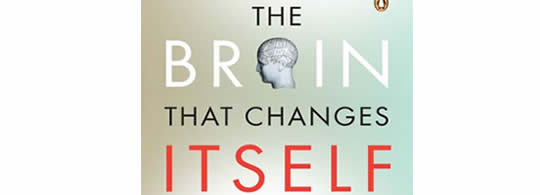The Brain That Changes Itself
Book Review: The Brain That Changes Itself: Stories of Personal Triumph from the Frontiers of Brain Science by Norman Doidge
For centuries, the human brain was considered largely immutable after childhood. We were told that we had all the brain cells we’d ever get by the time we were adolescents. In short, even under the best conditions, our brains were in decline for most of our lives; brain injury, stroke, and similar conditions, would cause irreversible damage. In The Brain That Changes Itself, Norman Doidge provides hope for all of us: our brains are surprisingly plastic, and often the key to unlocking that plasticity is the right training.
Doidge lays out his case for the brain’s ability to rewire itself in remarkable ways by combining in-depth descriptions of actual cases with a discussion of larger studies. He also enlivens the text by letting the reader learn about the scientists and doctors themselves, some of whom went for long periods of time before their work gained the respect of their peers.
The first case Doidge describes is a woman who has lost her sense of balance due to damage to her vestibular apparatus, the little chambers of fluid in our inner ears that allow us to orient ourselves. Historically, there has been no way to correct this crippling condition. Doidge tells how neuroscientist Paul Bach-y-Rita connected an accelerometer in a cap to a small plastic strip with several electrodes on the patient’s tongue. In essence, Bach-Y-Rita was simulating a signal that might come from a functioning vestibular apparatus and delivering that signal not to neurons connected to the inner ear but to an unrelated part of the body. Amazingly, in moments the patient’s brain had rewired itself and the tiny signals being sent to her tongue allowed her to maintain her balance.
The woman who regained her balance when an electronic device was connected to her tongue is just one of many examples of the amazing flexibility of our brains. Conditions related to autism, brain trauma, stroke, and other causes have been improved by tapping into the plastic nature of our brains.
While the rapid change of the patient with the tongue electrodes is impressive, many of Doidge’s examples involve nothing more than the right training. He writes about the work of Michael Merzenich, who showed that brain maps, once thought to be largely static, are in fact highly flexible. Scientists have worked with brain maps for decades, noting that each part of the body can be mapped to a specific spot in the brain, and that these areas are usually adjacent, e.g., the spot in the brain mapped to the right hand would be adjacent to the spot for the right wrist, and so on. These areas tend to be similar for all humans with normal brains, which led scientists to conclude that these connections were hard-wired. Merzenich, starting with monkey experiments, showed that he could remap these connections at will by surgical intervention or even actions as simple as taping two monkey fingers together for a period of time.
Overall, The Brain That Changes Itself is an engaging read because Doidge leavens the science with personalities and anecdotes. Although it is first and foremost a science book, the book has an undercurrent of hope and motivation. After reading it, one has to feel more confident about one’s own ability to change, and that new applications of brain plasticity research will help solve the problems of individuals suffering from conditions previously thought to be intractable. Doidge’s book is far more motivating than most so-called self-help books.

